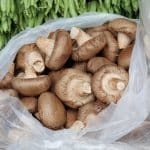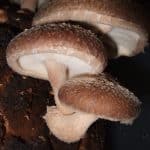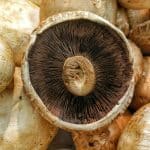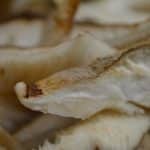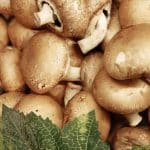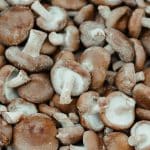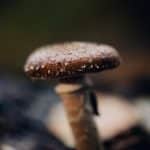The Best Way to Get Shiitake Mushroom Spores
If you’re wondering how to get shiitake mushroom spores the best way is to order them in grow kits online from vendors like North Spore. You can grow your own Shiitake mushrooms by using their pre-made fruiting blocks, spawn plugs, or even outdoor log growing kit. They have a variety of shiitake mushroom spore products that can get you on your way to growing and harvesting your own shiitake mushrooms.
Their grain and sawdust growing options let you extend the growing medium to indoor or outdoor growing. They sterilize their spawn bags prior to use, ensuring there is no contamination in the process. We also use top-quality spawn that has served as a workhorse for many professional farmers. Check out their Shiitake Grain Spawn and Shiitake Sawdust Spawn today.
A brief history and background information on Shiitake Mushroom Spores
Shiitake mushrooms are found in Japan, Korea, and China. Shiitake is a Japanese word translated as mushrooms grown on a shii tree, “take” means mushrooms, while “shii” is a type of evergreen tree found in Japan and Korea. Shii trees are closely related to the beech and oak, coming from the same taxonomic family. This is likely a reason that these are the substrates preferred in the U.S. to grow Shiitake outdoors.
The growing of shiitake has evolved from the simpler methods of selecting the trunks, which were developed in Japan, to highly mechanical methods for faster growth cycles, which were also developed in Japan. In early shiitake cultivation, fresh logs were placed near the logs that produced the shiitake mushrooms. The spores produced by one mushroom would hopefully colonize the newly cut logs before the other mushroom grew on the wood.
Over time, cultivators developed various methods to inject the spores into the newly cut logs, but sustained colonization and fruiting was not achieved until the mid-1900s. In 1943, C. Mori developed a practice of inoculating wood logs using wedges made from timber with a fungus lining its entire surface.
Over a few decades, it evolved into the drilling-and-plugging system now widely used. These developments have allowed for more efficient, reliable, and larger commercial harvests of timber. Commercial mushroom farming with supplementary wood pulp like grain spawn was developed and was successful in Japan in the mid-1900s. Since that time, bags machines and methods for optimized commercial farming have been developed in great detail in Japan.
One of the wonderful things about growing Shiitake mushrooms is that it can happen on low-tech as well as high-tech scales. From backyards to big commercial farms, shiitake is being grown in abundance across the U.S. right now. Shiitakes are known by many consumers for their excellent flavor and texture.
They can even be dried and still retain high-quality taste and texture. All these things add up to giving this mushroom great versatility and potential to grow at any scale, from the family farm to the big commercial operation.
Typical Life Cycle of Shiitake Spores
Shiitake spores may lie dormant for a while before germinating, or they can sprout a mycelium right away. This mycelium starts with the Shiitake mushroom spores and begins to grow to a new food source, expanding the mycelial network. Eventually, mycelium needs to merge into another network in order to produce mushrooms.
The mycelium constantly releases enzymes into the growing environment in order to breakdown food, build barriers, claim territories, and communicate with the environment. Mycelium is the intelligent, dynamic phase of fungi growth. Most fungus life remains in this stage.
Mycelium has only a single cell wall, so must be kept in an environment with high humidity. You can find mycelium anywhere by rolling logs over or digging through leaves. Anywhere that has organic materials, mycelium grows.
As mycelium continues to develop, it consumes more food sources, eventually being stimulated into producing the mushroom. It can be triggered by environmental cues, competition, or an altered food source. We have Shiitake mushroom cultures which allow you to clone and propagate the mycelium of your favorite Shiitake.
Using Shiitake Spores in Grain and Sawdust Spawn
Grain Spawn is generally low in yield, with high nutritional value. This makes grain spawn a good choice for when your substrate is going to expand more, or when you are looking to introduce extra nutrients to your substrate. For example, if inoculating the grains with the intention of later adding them into the fruiting block of the sawdust, you will want to use either the first-generation bag of seed or second-generation grain spawn. If you are inoculating straw or adding to sawdust, using grains may be a good option for adding extra nutrients into your substrate.
One benefit to using sawdust in this scenario is that mycelium is already accustomed to eating sawdust, so it is likely to have less propagating time. Sawdust-based spawn is the most common spawn used in commercially producing Shiitake mushrooms on logs. Sawdust is typically the least expensive of the spawning options, and has relatively fast growth due to its smaller particle size. Since the mycelium has little food reserves for its consumption, it quickly seeks out new substrates on which to grow. Sawdust spawn is typically spawned at Generation 3 if purchased from spawn suppliers.
When you are inoculating logging, you need a special tool called the Palm Inoculator, which costs around 45 USD. Because of this, sawdust is best used when inoculating 20+ logs over several years.
You can find our favorite supplements containing Shiitake Mushrooms on the following page of our website to learn more.
Learn more:







